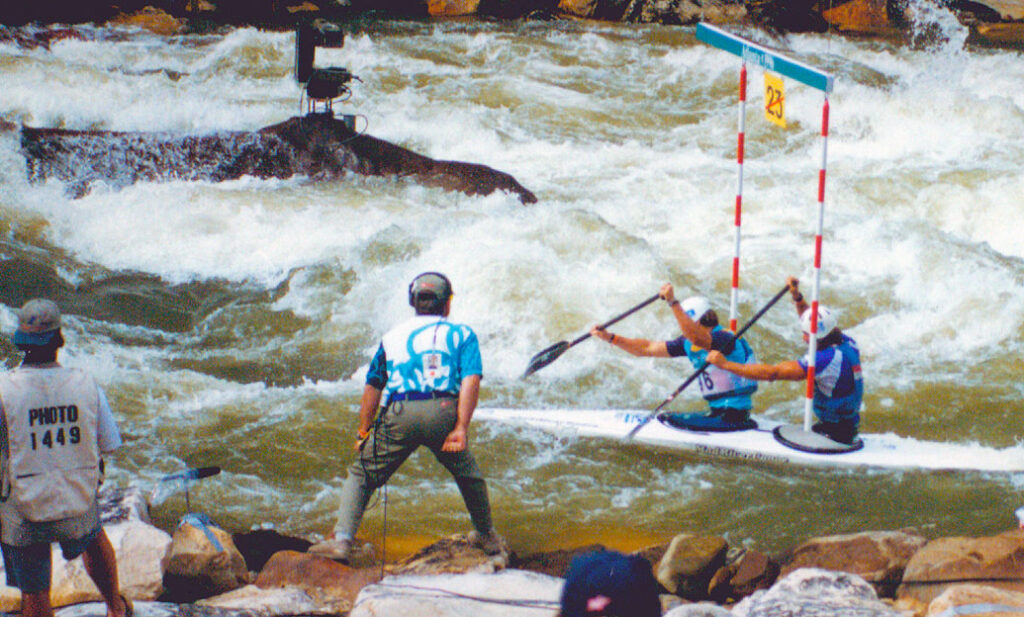
Why the Ocoee River Was Chosen for the 1996 Olympics: A Legacy of Adventure
A River Like No Other
Nestled in the heart of the Appalachian Mountains, the Ocoee River is a testament to nature’s raw power and beauty. With its thundering rapids, rocky terrain, and lush surroundings, it beckons adventurers seeking both challenge and serenity. But in 1996, this river became more than just a natural wonder—it became the stage for a historic Olympic event.
The First Natural Olympic River
In a groundbreaking move, the International Olympic Committee selected the Ocoee River to host the canoe and kayak slalom events during the 1996 Summer Olympics in Atlanta. This decision was unprecedented, as all previous Olympic slalom courses were man-made. The Ocoee’s unique combination of natural features made it an ideal venue for these high-adrenaline sports.
The Ocoee River’s 1996 Olympic Whitewater Course was a 500-meter stretch featuring 25 gates, including both upstream and downstream configurations. Engineers narrowed the riverbed from 200 feet to 70 feet, increasing the water’s speed and intensity. Ocoee Adventure Center
The Olympic Events
The 1996 Olympics featured both men’s and women’s kayak (K-1) and men’s canoe (C-1) events. In the canoe events, paddlers kneel with a single-blade paddle, while in the kayak events, athletes sit with legs extended and use a double-bladed paddle. Competitors navigated through a series of gates, aiming for the fastest time while avoiding penalties.
A Global Gathering
Athletes from over 30 nations converged on the Ocoee River, showcasing their skills and determination. The event not only highlighted the sport’s global appeal but also solidified the Ocoee’s reputation as a premier whitewater destination.
Engineering a World-Class Course
Transforming the Ocoee River into an Olympic-level course was no small feat. A collaboration between the Tennessee Valley Authority (TVA), the U.S. Forest Service, and the Atlanta Committee for the Olympic Games (ACOG) led to the creation of a 500-meter course with 25 gates. The riverbed was narrowed, and rapids were enhanced to meet Olympic standards. Wikipedia
The Ocoee Whitewater Center
Adjacent to the Olympic course, the Ocoee Whitewater Center served as the hub for the 1996 events. Designed to accommodate thousands of spectators, the center featured viewing areas, facilities, and educational exhibits. Tragically, the center was destroyed by fire in 2022. Wikipedia
A Lasting Legacy
The Ocoee River’s role in the 1996 Olympics left an indelible mark on the region. It showcased the harmonious blend of nature and sport, setting a precedent for future Olympic venues. Today, the river continues to attract adventurers from around the world, eager to experience the thrill of its rapids.
Experience the Thrill
While the Olympic course is no longer in operation, the Ocoee River remains a premier destination for whitewater rafting and kayaking. Outfitters offer guided trips through the Upper Ocoee River, allowing visitors to relive the excitement of the 1996 Olympics. Wikipedia
Remembering the Champions
The 1996 Olympic canoe and kayak slalom events saw remarkable performances. Germany’s Thomas Schmidt and Elisabeth Micheler-Jones clinched gold in the men’s and women’s K-1 events, respectively. In the men’s C-1 event, the gold went to Czech paddler Lukáš Pollert. The U.S. team made its mark with Dana Chladek securing silver in the women’s K-1. Wikipedia
Plan Your Adventure
Eager to experience the Ocoee River’s legendary rapids? Numerous outfitters offer rafting and kayaking trips suitable for all skill levels. Whether you’re a seasoned paddler or a first-timer, the Ocoee promises an unforgettable adventure.
